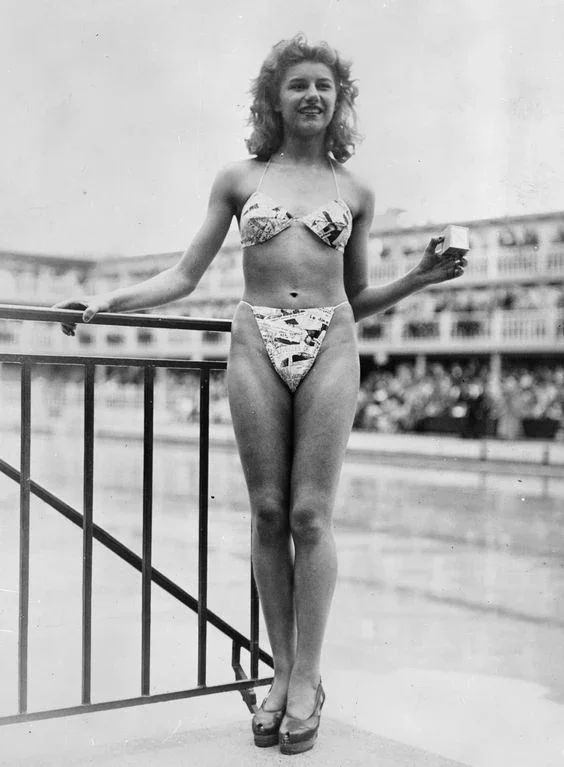The Bikini
“A bikini is not a bikini unless it can be pulled through a wedding ring.” — Louis Réard, inventor of the bikini (1946)
The Bikini: A Seaside Icon Through Time
A garment no bigger than a handkerchief. A ripple that became a wave.
On beaches from the French Riviera to Cape Cod cottages, the bikini has long been more than fabric and string—it’s a symbol of freedom, rebellion, leisure, and salt-sprayed living. Its story spans bombshell debuts, cottage-y crochet, and modern minimalism, always evolving with the tides of culture.
An Atomic Beginning (1946)
Paris, summer 1946. Louis Réard unveiled a two-piece so tiny it could fit into a matchbox. He called it the bikini, after Bikini Atoll, where atomic tests had just shaken the world. And shake the world it did—revealing not just midriffs, but a new kind of boldness.
In post-war Europe, women craved lightness, liberation, and joy. The bikini delivered all three. Yet it was deemed scandalous, even banned on certain Mediterranean shores. Early wearers—like dancer Micheline Bernardini—were seen as daring heroines of style.
From Taboo to Temptation (1950s–60s)
The bikini smoldered at the edges of cinema before bursting into mainstream glamour. Brigitte Bardot, sun-drenched on the Riviera, gave it a flirtatious French allure. Then came Ursula Andress, stepping out of Caribbean surf in Dr. No (1962), her white bikini cinched with a dive knife—a moment burned into cultural memory.
By the 1960s, bikinis embodied not just style but a revolution in womanhood—echoing freedom movements and shifting tides of modesty.
Boho Textures and Cottage Crochet (1970s)
The 1970s brought softness. Handmade crochet bikinis, earthy colors, and floral motifs turned swimwear into art you could imagine folded in a wicker drawer of a beach cottage. These designs—less engineered, more intimate—captured the bohemian spirit of coastal living.
They still feel timeless today: easy, natural, and breezy, the sort of thing you’d pair with a straw sunhat and bare feet on cottage porch steps.
Neon, Athleticism & Pop Culture (1980s–90s)
By the 80s, the bikini was no longer shy. High-cut legs, vivid neons, and glossy fabrics strutted onto California beaches, immortalized in Baywatch. This was swimwear as spectacle—confidence stitched in Lycra.
The 90s softened things again, introducing the tankini, a two-piece with a modesty that spoke to a family-friendly seaside life.
Minimalism, Body Positivity & Today’s Coastal Aesthetic
The 2000s embraced the string bikini as a summer uniform. The 2020s? Think high-leg cuts, thongs, and an Instagram-era return to daring silhouettes. Yet, alongside the boldness, cottage-inspired textures have circled back—crochet bikinis, linen-like fabrics, and floral prints that feel at home against clapboard cottages and striped deck chairs.
What was once scandalous is now seaside ritual: a garment tucked into weekend bags, drying on driftwood rails, tied behind necks as sun dips behind the horizon.
Eres Swimwear



